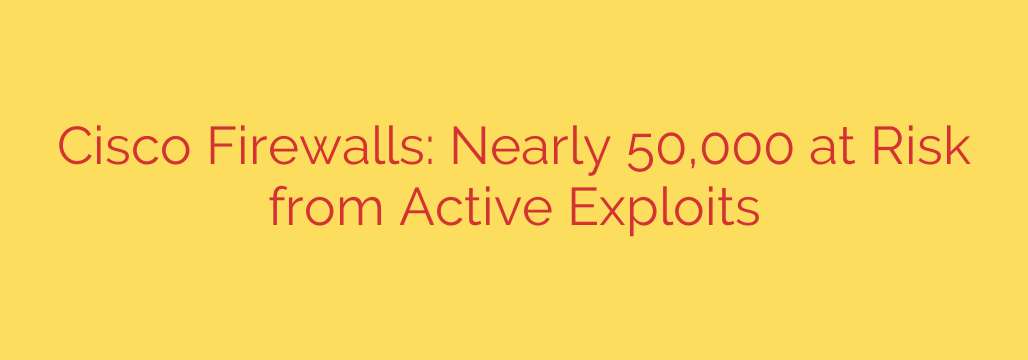
Urgent Security Alert: Critical Vulnerability in Cisco Firewalls Actively Exploited
A critical security vulnerability affecting Cisco’s core firewall products is being actively exploited, placing tens of thousands of corporate and government networks at significant risk of disruption. Security researchers have identified that nearly 50,000 Cisco firewalls remain unpatched and exposed to the public internet, making them prime targets for malicious actors.
The flaw impacts Cisco Adaptive Security Appliance (ASA) and Firepower Threat Defense (FTD) software, two of the most widely used enterprise-grade firewall solutions in the world. If your organization relies on these devices, immediate action is required to prevent a potentially crippling attack.
What is the Vulnerability?
The vulnerability is a remote, unauthenticated denial-of-service (DoS) condition. In simple terms, this means an attacker, located anywhere in the world, can crash a vulnerable firewall without needing any login credentials or prior access.
The attack is executed by sending a specifically crafted data packet to the device’s web server interface. Upon receiving this malicious packet, the firewall’s software is unable to process it correctly, causing the system to reload or crash. This forced reboot effectively takes the firewall offline, severing the network’s connection to the internet and disrupting all traffic passing through it.
Key points about this threat include:
- No Authentication Required: The barrier to entry for attackers is extremely low, allowing for widespread, automated attacks.
- Active Exploitation: This is not a theoretical risk. Threat actors are actively scanning the internet for vulnerable devices and launching attacks.
- Widespread Impact: The flaw affects a broad range of Cisco ASA and FTD software versions, leaving a massive number of devices susceptible.
The Impact of a Successful Exploit
A successful denial-of-service attack against a core network firewall is far more than a simple inconvenience. The consequences can be severe and immediate, leading to:
- Complete Network Outage: A crashed firewall can bring all external communications to a halt, cutting off employee access to cloud services, shutting down customer-facing websites, and disabling remote VPN connections.
- Business Disruption: For any organization reliant on continuous connectivity, the resulting downtime can lead to significant financial losses, reputational damage, and loss of productivity.
- Security Gaps: While the primary impact is a DoS, a disabled firewall leaves the network temporarily blind and defenseless, potentially creating an opportunity for attackers to launch secondary attacks while security teams are scrambling to restore service.
How to Protect Your Network: Immediate Steps to Take
Given the active exploitation of this vulnerability, complacency is not an option. Cisco has released software updates to address the flaw, and administrators must act swiftly to secure their infrastructure.
Identify Vulnerable Devices: The first step is to conduct an immediate audit of your network infrastructure. Identify all Cisco ASA and FTD appliances and determine the exact software version they are running. Compare these versions against the list of affected software detailed in Cisco’s security advisory.
Patch Immediately: Applying the security patches provided by Cisco is the only definitive way to mitigate this threat. There are no effective workarounds that can prevent exploitation. Prioritize patching for all internet-facing firewalls, as these are the most exposed and at the highest risk.
Restrict Access to Management Interfaces: As a security best practice, the management interfaces of critical network devices like firewalls should never be exposed to the public internet. Ensure that access to your Cisco ASA/FTD management portals is restricted to a secure, internal management network. Minimizing your attack surface is a critical layer of defense against this and future vulnerabilities.
Monitor for Suspicious Activity: Review firewall logs for any unexpected reloads, crashes, or unusual traffic patterns directed at the device’s management interface. Signs of repeated connection attempts from unknown IP addresses could indicate that your device is being targeted by scanners.
In today’s threat landscape, proactive security is essential. This vulnerability serves as a critical reminder of the importance of timely patching and diligent network security hygiene. Taking decisive action now can prevent a major disruption and keep your organization’s digital assets secure.
Source: https://www.bleepingcomputer.com/news/security/nearly-50-000-cisco-firewalls-vulnerable-to-actively-exploited-flaws/








